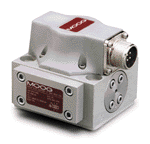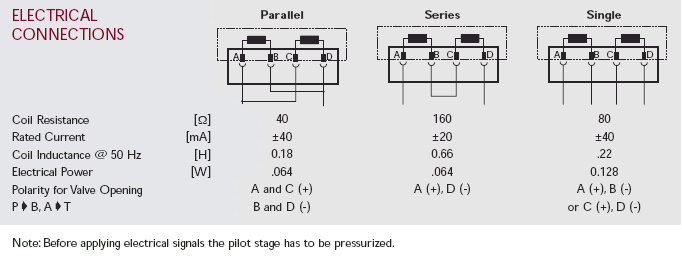
| Common apparatus |
|---|
| Hydraulic system |
| Electronic components |
| Data acquisition |
| EMG monitoring |
| NLID Tools |
| Troubleshooting |
| Materials |
| Supine apparatus |
|---|
| Assembly procedure |
| Safety Measures |
| Components |
| Servovalve |
| Actuator |
| Potentiometer |
| Pressure Filter |
| Torque transducer |
| Boot |
| Literature |
| Computing resources |
|---|
| CVS |
| Ethics |
|---|
| SDS / Inventory |
|---|
Servovalve - Standing
 The flow to
each actuator is controlled by a two-stage control servovalve with mechanical
feedback pilot stage.
The flow to
each actuator is controlled by a two-stage control servovalve with mechanical
feedback pilot stage.
Model: D671-3001 (Moog)
Type: S04JOGM4VPL
The amount by which the spool is open is directly related to the speed of the actuator rotation. In principle, when the spool is at center position the actuator will not rotate since all fluid ports are blocked. (In practice the servovale null may have to be adjusted to achieve zero actuator motion.)
Wiring Information
The servovalve is equipped with a four-pin electrical box connector that mates with an MS3106F14S2S cable connector. All four torque motor leads are available at the connector so external connections can be made for series, parallel or single coil operation. See illustration below.

The servovalve responds to input current. To reduce the effects of coil inductance and to minimize the effects die to coil resistance variations the servovalve is driven with a servoamplifier with high internal impedance (as obtained with current feedback.)
Miscellaneous
Dither: A small amplitude, high frequency sinusoidal signal may be used to reduce friction and hysteresis effects within the valve, improving system performance. If used, the peak-to-peak amplitude should be less than 10% of rated signal. Since the desired frequency is dependent on the valve style, consult the factory for frequency recommendations.
Last modified: 2007-04-23 Ross Wagner